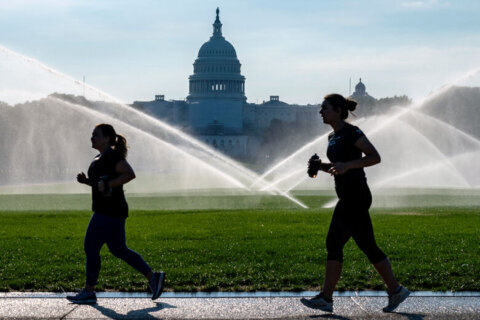Nearly two years after the start of the COVID-19 pandemic, traffic analysis indicates that many in the D.C. area who commuted each day are still working from home.
Traffic congestion remains about 65% below 2019 levels, according to INRIX, a company focused on traffic analytics.
Driving fell off significantly in Northern Virginia, suburban Maryland and D.C. in March 2020, when the region went into pandemic lockdown, with schools closed to in-person learning and many government and private employers stepped up telecommuting policies.
INRIX estimates that traffic bounced back a bit this year compared to last year.
The company measures traffic congestion in hours lost to commuters. INRIX estimates D.C.-area commuters are losing 44 hours this year in congestion during peak commuting periods, compared to off-peak conditions. That compares to 124 hours lost in 2019 and just 29 hours lost last year.
It ranks D.C. 13th on the list of U.S. cities (compared to 12th in 2020) for the amount of hours lost traffic congestion. The top three cities for hours lost in traffic congestion this year are New York (102), Chicago (104) and Philadelphia (90).
The company also detects reduced demand for travel specifically into downtown D.C. According to the INRIX study, while downtown D.C. is home to 13% of the region’s jobs, travel demand there remains 38% below the level in 2019.
The traffic analyst also placed Interstate 95 south in the area of Lorton Road as the 21st-ranked worst corridor in the nation for congestion, with travelers typically delayed by 11 minutes each day at 5 p.m.








